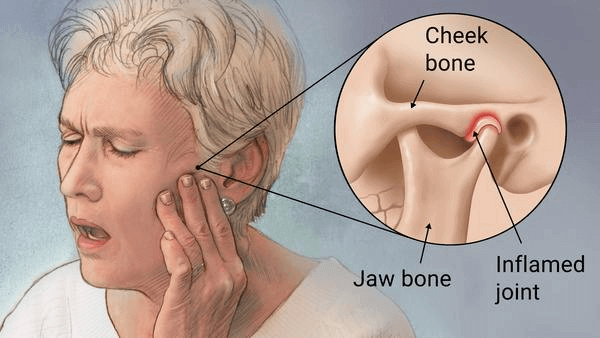What is TMJ?
“The temporomandibular (tem-puh-roe-man-DIB-u-lur) joint (TMJ) acts like a sliding hinge, connecting your jawbone to your skull. You have one joint on each side of your jaw. TMJ disorders — a type of temporomandibular disorder or TMD — can cause pain in your jaw joint and in the muscles that control jaw movement” (Mayo Clinic, 2018).
What causes TMJ?
The causes of TMJ vary per patient and can be difficult to pinpoint. “Your pain may be due to a combination of factors, such as genetics, arthritis or jaw injury. Some people who have jaw pain also tend to clench or grind their teeth (bruxism), although many people habitually clench or grind their teeth and never develop TMJ disorders” (Mayo Clinic, 2018). The structure of your jaw/mandible and your skull may also play a role. Some patients have also presented to the clinic with TMJ disorder after a dental surgery or procedure.
What are the symptoms of TMJ?
Mainly, a patient will feel pain throughout the jaw and surrounding area. A patient with TMJ may also have difficulty opening and closing their mouth, as the temporomandibular joint locks and unlocks. Chewing food, singing, and just speaking can be painful for patients with TMJ.

How does one treat TMJ?
There are many methods of treatment, which range from non-invasive to invasive. For non-invasive treatment, a patient can receive high velocity, low amplitude jaw adjustments by a licensed chiropractor. Manual/myofacial therapy, such as massaging the facial muscles and stripping the muscles of any lactic acid build-up, may be paired with the adjustments for better results. The use of a night guard, provided by a licensed dentist, can be extremely beneficial as well. This method is great for patients who clench their jaw or grind their teeth when they are sleeping. Thankfully, we have an amazing dentist next door to most of our locations. Check out brush365dental.com for more information. Other medical treatments could include receiving botox injections. This method, in a sense, paralyzes the jaw muscles. It forces the muscles to relax so the jaw can move with ease. There are also great aesthetic benefits of reducing wrinkles and aging. In severe cases, a patient may need jaw surgery. This is, of course, a last resort. Most patients are more likely to seek out the non-invasive methods to begin with. Think twice before going under the knife!
Work Cited
TMJ disorders. (2018, December 28). Retrieved July 08, 2020, from https://www.mayoclinic.org/diseases-conditions/tmj/symptoms-causes/syc-20350941
